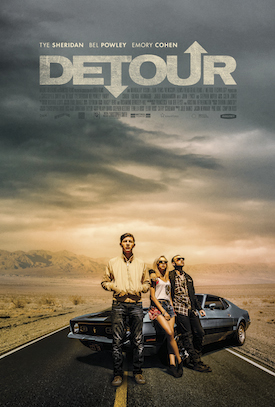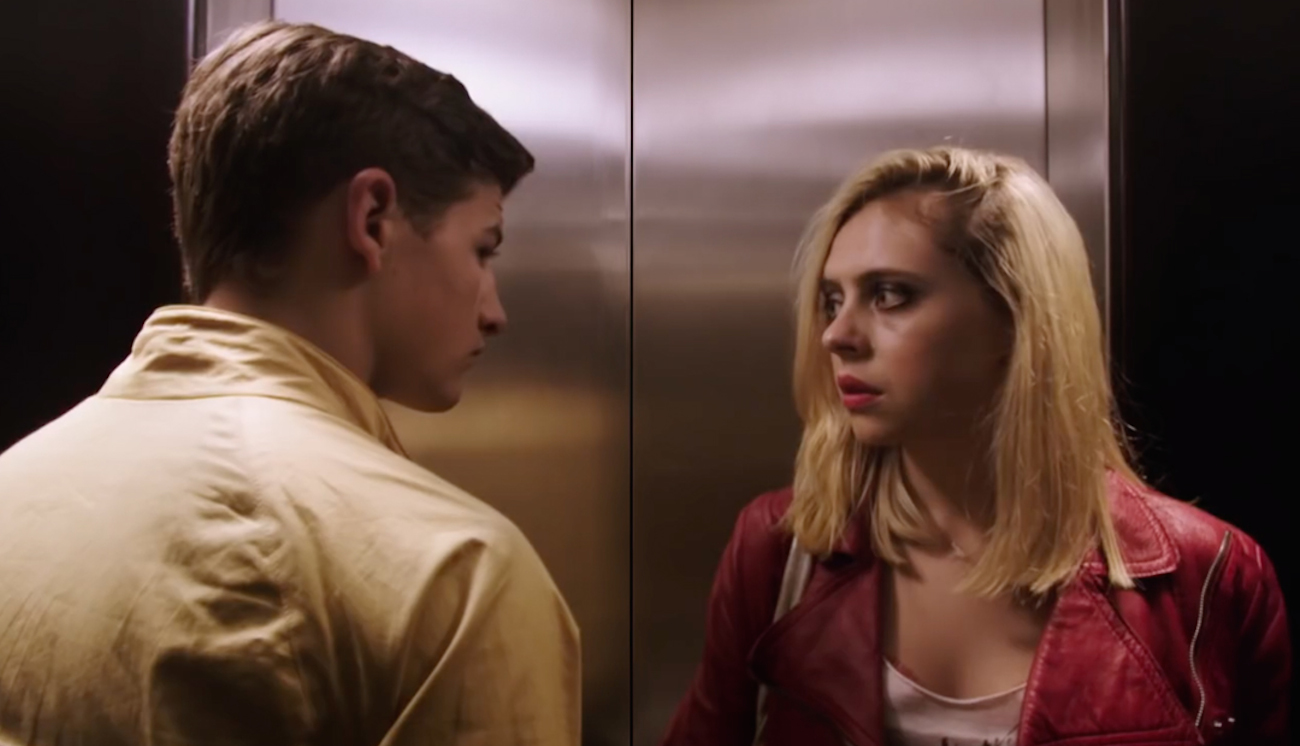 Harper (Tye Sheridan), a young law student, obsesses over the idea that his shifty stepfather (Stephen Moyer) was involved in the devastating car crash that left his mother hospitalized and comatose. He drowns his suspicions in whiskey until he finds himself suddenly engrossed in conversation with volatile grifter Johnny (Emory Cohen) and his stripper companion, Cherry (Bel Powley). As daylight breaks and the haziness of promises made becomes clearer, how will Harper handle the repercussions (not to mention the violent duo—on his doorstep)? Employing a split-narrative structure to tell this tale of deception and murder, writer/director Christopher Smith takes his audience on a thrill ride full of hairpin turns, where it’s never quite clear what or who can be trusted. I sat down with him in Los Angeles to talk about his suspenseful new thriller.
Harper (Tye Sheridan), a young law student, obsesses over the idea that his shifty stepfather (Stephen Moyer) was involved in the devastating car crash that left his mother hospitalized and comatose. He drowns his suspicions in whiskey until he finds himself suddenly engrossed in conversation with volatile grifter Johnny (Emory Cohen) and his stripper companion, Cherry (Bel Powley). As daylight breaks and the haziness of promises made becomes clearer, how will Harper handle the repercussions (not to mention the violent duo—on his doorstep)? Employing a split-narrative structure to tell this tale of deception and murder, writer/director Christopher Smith takes his audience on a thrill ride full of hairpin turns, where it’s never quite clear what or who can be trusted. I sat down with him in Los Angeles to talk about his suspenseful new thriller.
Danny Miller: As a classic movie fan, I appreciated all of the moments in the film that were homages to some of my favorite films — even the names of your three main characters: Harper, Johnny Ray, and Cherry, and, of course, the 1945 noir also called Detour. I love that we see a clip from that in this movie.
 Christopher Smith: I’m obsessed with that film, I’m so glad you noticed that. In addition to Detour, the film that was the biggest influence on me for this story was another noir, The Woman in the Window by Fritz Lang with Edgar G. Robinson, Joan Bennett, and Raymond Massey.
Christopher Smith: I’m obsessed with that film, I’m so glad you noticed that. In addition to Detour, the film that was the biggest influence on me for this story was another noir, The Woman in the Window by Fritz Lang with Edgar G. Robinson, Joan Bennett, and Raymond Massey.
I’m ashamed to say that I’ve never seen that one!
Oh, you have to. When I was 22, I finally made the decision to quit my crap job and go back to university to study film. Where I grew up in England, that just wasn’t done — movies were made in Hollywood, it wasn’t something anyone I knew ever aspired to. When I’d say that I want to make movies, people would just say, “What the hell are you talking about?” Anyway, I went back to school and the first film we watched in my first film studies class was The Woman in the Window. I was completely affected by that film. It’s also about a murder and I remember so wanting the character to get away with it! In the opening scene, Robinson is a lecturer in criminology and on the blackboard in his classroom you see he’s written, “The man who chooses to kill should not be punished the same as the man who kills in self-defense.” So much of my movie comes from there.
Fascinating. And there seems to be a real nod to the classic American road movies. I guess Detour falls into that category as well.
Yes, absolutely. Being from England, I always romanticized American road movies all out of proportion!
The split-screen techniques you use in this film also seem like a tribute to these films. I was so fascinated by those here because I ultimately came to have a much different understanding about what they were showing than I did at the beginning.
Oh, good. If you watch the film again you’ll see that all the information you need to figure out what’s going on there exists in those split-screen images, but it’s hard to figure out at first. As a filmmaker, I certainly want people to enjoy the story even though I’m messing with your heads by not giving you everything in the right sequence. My hope is that audiences find that kind of frustration worth it in the end.
Such an interesting technique — and it adds this whole other layer of complexity. I also love how Tye’s character’s feelings about his stepfather are not just based in fact, but related to that thing that many of us with divorced parents do in terms our parents’ new relationships.
Yes, absolutely! I was trying to show that without always making it completely clear what the stepfather’s role was in the mother’s situation.
The structure of the film is so interesting — as is the “trick” about what we’re seeing when.
The idea of this film in its most simple form is that you have a long flashback in the middle of the film that you don’t realize is a flashback until you get to that point again when he opens the door to Johnny Ray and Cherry. And then, at the end of the film, we do the exact same trick again — you assume one thing has happened between Harper and Cherry, but then you see it in a different sequence and get the big picture. I think it’s interesting that people fall for the same trick twice.
But differently. When I realized the first twist, I was like, “Oh wow, that’s so interesting,” but with the second one, I was like, “Holy shit!” Of course, the risk you take in this kind of structure is that some people are going to misinterpret what’s happening. I’ve read some reviews that, in my opinion, get the story completely wrong.
It’s true. And partly why I don’t read too many of the reviews! It does make me a Iittle nuts when people miss something that I find pretty clear. On the other hand, I wanted the film to have an emotional resonance even if you don’t always understand what’s happening. I know you can’t please everybody, and I’m fine with that. With critics I can understand if someone doesn’t like the film, that’s fine, but when they start offering explanations that just don’t make any sense, that can be frustrating.
I love the slow reveal of these characters — there were revelations about each one of them that changed my initial impressions of them by the end of the film. Were there things about their characters that you shot but didn’t use such as scenes with the mother before she went into the coma?
The only scene that we shot that I ended up cutting was a scene in the hospital when Harper comes in and defends Cherry who was there to treat that cut on her face. They just bump into each other so when they meet later with Johnny Ray, he already had met her and there was that look of recognition. I decided they shouldn’t meet before then and now that look he gives her can be interpreted in a different way.
Which reminds of how much I loved that scene in the diner. That waitress has a very small part but it’s so well done.
She was great. I was trying to kind a kind of David Lynch feel for that scene — I love everything about it!

